The Rabiah Scale, Part 2
Two weeks ago, I introduced you all to the Rabiah Scale, a scale I use on my blog to talk about how likely we are to visit a particular plane in a Standard-legal set. There were so many planes to talk about, I didn't get to them all, so today is the second half of that article. The first article explains the scale and the criteria, so please go back and read that first if you haven't yet.
Mercadia
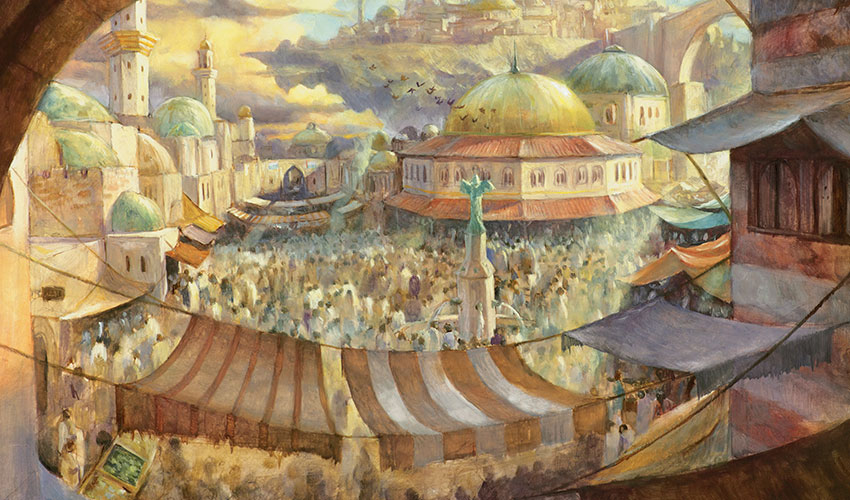
Previously Seen In: Mercadian Masques
Popularity: Unpopular
Mercadian Masques occurred before we started asking about worlds in our market research. If not, there's a chance this would be the lowest scoring world. It wasn't popular at the time, and I don't believe it's aged well. While both Kamigawa and Lorwyn get asked about with some frequency in social media, I very rarely hear players asking for a return to Mercadia.
Mechanical Identity: Weak
The connection between the world and its mechanics was pretty loose. The world had rebels and mercenaries and that was about as tight a connection as it got. Being that neither of those are mechanics we'd want to bring back, a return would have to start from scratch mechanically.
Creative Identity: Weak
Here's the art from one of the Plains from Mercadian Masques.
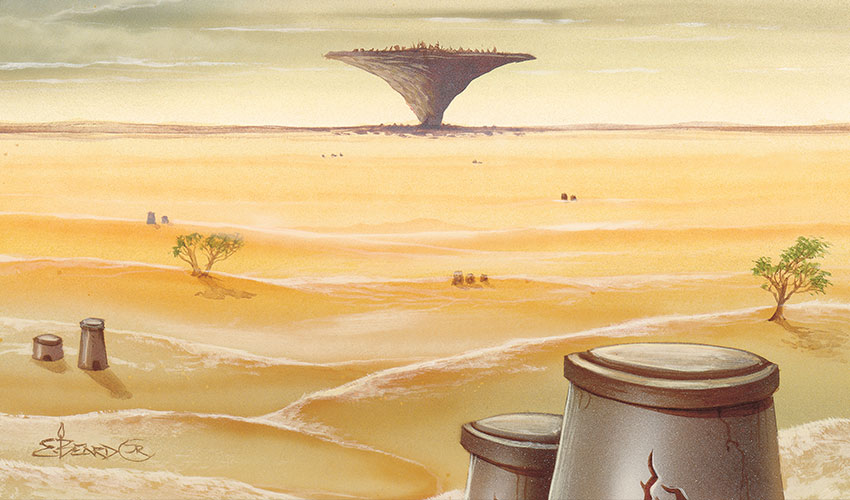
See that thing that kind of looks like a tornado. That's an upside-down mountain. How exactly can a mountain be upside down? Because "things work differently here." The idea behind this world is that everything is (sometimes literally) turned on its head. There's a whole subplot with Squee and the goblins of this world because on this plane goblins are smart. The world is a bit of a mess creatively, and any return would require extensive work to make sense of everything.
Room for Expansion: Minimal Room for Expansion
Many of our worlds are built hinting at large swaths of unseen parts of the world. Mercadia, not so much. I'm not even sure what parts of what was established would be kept if we returned, and I definitely have no idea what new things would be added.
Story Continuation: Minor Plot Lines
The few plot lines created were wrapped up by the end of the Weatherlight Saga, and there's nothing tying this plane to the modern Magic story.
Rabiah Scale Rating: 9
After Rabiah, this is the plane I'm most skeptical we'd ever return to.
New Phyrexia (formerly Mirrodin)
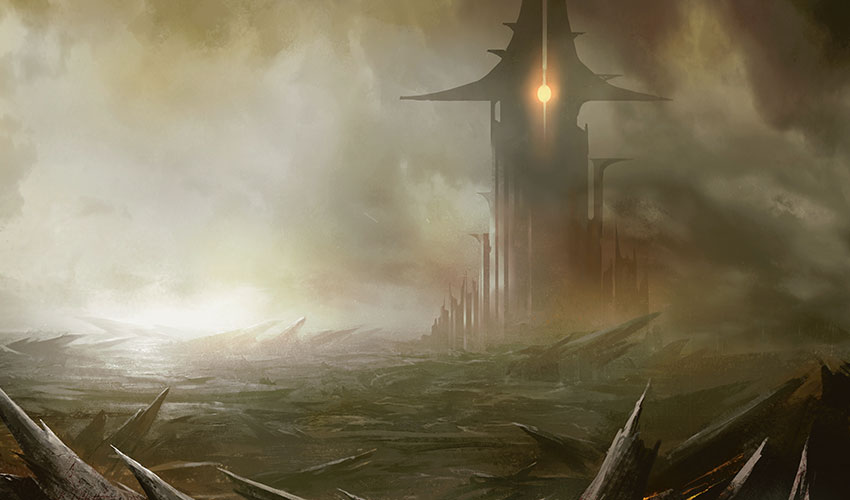
Previously Seen In: Mirrodin, Darksteel, Fifth Dawn, Scars of Mirrodin, Mirrodin Besieged (as Mirrodin), and New Phyrexia (as New Phyrexia)
Popularity: Popular (slightly more for Mirrodin than New Phyrexia)
Players like both Mirrodin and New Phyrexia, preferring the former slightly over the latter. From the data we collected, here's what we've been able to piece together. The audience likes the Phyrexians (although, established players like them more than newer players), but they prefer them invading a world to having already invaded it. It seems the act of them getting their initial claws into a world is just more fun than seeing them bicker amongst themselves after enslaving it.
Mechanical Identity: Strong
Mirrodin is tied closely to artifacts, and New Phyrexia is tied closely to the Phyrexians (which includes being tied to artifacts). Both artifacts and the Phyrexians have numerous mechanical executions, giving a return plenty of design tools to play with. I will note that many of those tools have caused us problems in the past (artifact sets, I'm looking at you), so while there's a lot to work with, some of it is playing in dangerous space.
Creative Identity: Strong
The Phyrexians are Magic's oldest villains (premiering all the way back in Antiquities). Their invasion of a popular plane gave the creative team a lot of different things to work with. The biggest issue is that the Phyrexians can get a bit intense visually, and a world full of that would require some nuance in execution.
Room for Expansion: Some Room for Expansion
There's lot of room for the Phyrexians to invade other worlds, less so to revisit the world they've already captured. As I mentioned above, the biggest need for a return would be finding a way to get more non-Phyrexian stuff into the set.
Story Continuation: Major Plot Lines
There are numerous characters, many of them Planeswalkers, who are tied up with the Phyrexians and/or New Phyrexia. One of the biggest reasons I think we'll revisit New Phyrexia is how intertwined it is with the modern story.
Rabiah Scale Rating: 5
New Phyrexia is an interesting contradiction. A return would require tackling many problems, both mechanically and creatively, but it seems too central to too many Planeswalkers' plotlines to avoid forever.
Phyrexia
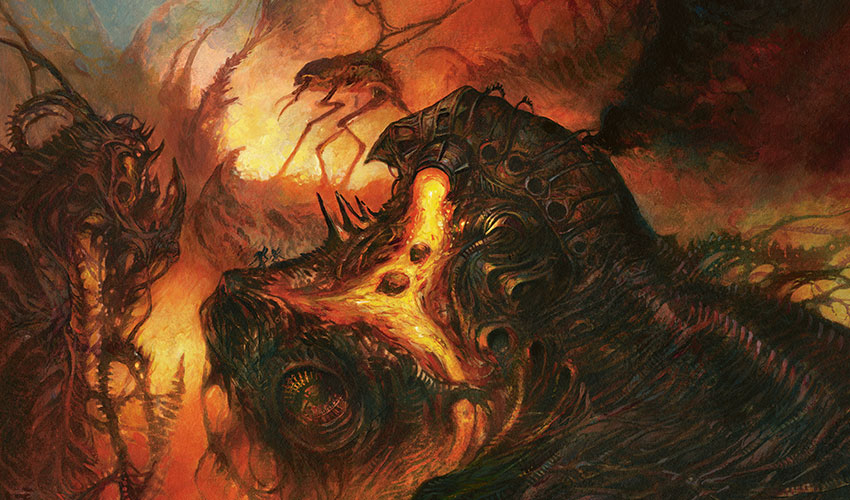
Previously Seen In: Antiquities (more hinted at than seen) and Urza's Saga
Popularity: Popular
Players, more established players especially, like the Phyrexians. This was their first home, and it's pretty cool to hear about second hand. My guess is that players think it would be more fun to visit Phyrexia than it would actually be, as Phyrexia is the closest thing Magic has to Dante's Inferno (in fact, the plane was literally modelled after Dante's Inferno).
Mechanical Identity: Average
The Phyrexians have a lot of mechanical connections, but we've spent so little time on Phyrexia that the plane doesn't. Probably the biggest mechanical hurdle is that it's mostly a world of black and artifacts, making it difficult to show off the other four colors.
Creative Identity: Weak
Phyrexia has two big creative problems. One, it's a one-note world. As stated above, I'm not sure what exactly the nonblack cards would show. Two, the plane was destroyed at the end of the Weatherlight Saga. Both are pretty big problems to solve.
Room for Expansion: Some Room for Expansion
So few cards have been set on Phyrexia that there's plenty of unexplored things to see. Once again though, they're all black and artifacts.
Story Continuation: Minor Plot Lines
While the Phyrexians are a major part of the modern story, Phyrexia is not. In fact, the current Phyrexians aren't even the Phyrexians from Phyrexia, so there's little tying Phyrexia to the modern-day story. And once again, the plane no longer exists.
Rabiah Scale Rating: 9
Visiting Phyrexia would require going back in time. (We've done that for numerous sets, so it's not an impossibility.) Even then, there are a lot of problems to solve, both mechanically and creatively, making any return a longshot.
Rabiah
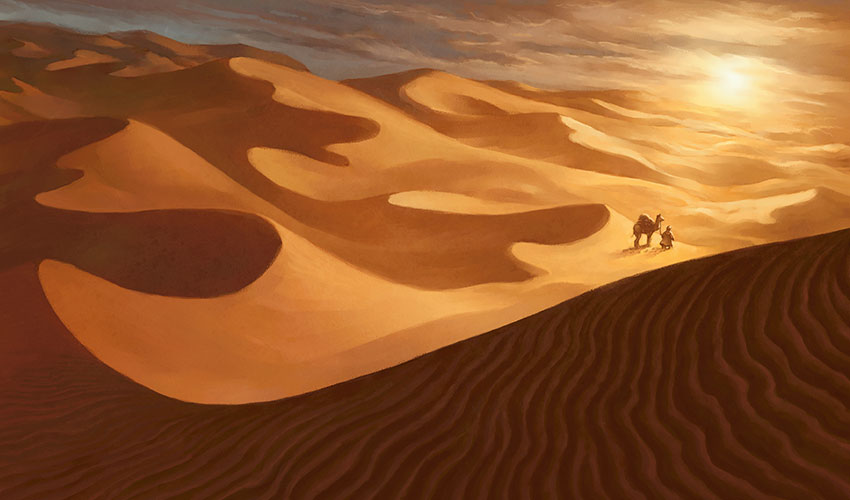
Previously Seen In: Arabian Nights
Popularity: Liked
Players liked Rabiah at the time, although there wasn't much to judge it against. I don't think it would fare all that well against modern worlds.
Mechanical Identity: Weak
Arabian Nights was the first top-down design. It didn't even have any named mechanics (other than the already evergreen ones). It was mostly designed card by card, which means there isn't a lot mechanically to build on.
Creative Identity: Weak
For starters, Rabiah isn't even a Magic world inspired by a source material. It's a Magic world that's a copy of an existing (although public domain) intellectual property. When Richard designed this set, he was bringing to life One Thousand and One Nights. Nowadays, we make worlds with our own spin on them. Rabiah doesn't have that. In fact, Richard wasn't even trying to make a new world—that was all done after the fact. The name "Rabiah" was just a cutesy way to explain why the set was called Arabian Nights.
Room for Expansion: Minimal Room for Expansion
Rabiah didn't build anything of its own, so there's nothing to build off of.
Story Continuation: Minor Plot Lines
There wasn't any Magic story in Arabian Nights, and we haven't tied to it in any way in the modern story.
Rabiah Scale Rating: 10
The reason this world is a 10, and why the scale is named after it, is because I highly doubt we're ever going back there. It's not how we build worlds anymore. Now, I do believe we may one day make a new world inspired by similar source material, but we'll put our own spin on it, and it most likely won't be Rabiah.
Rath
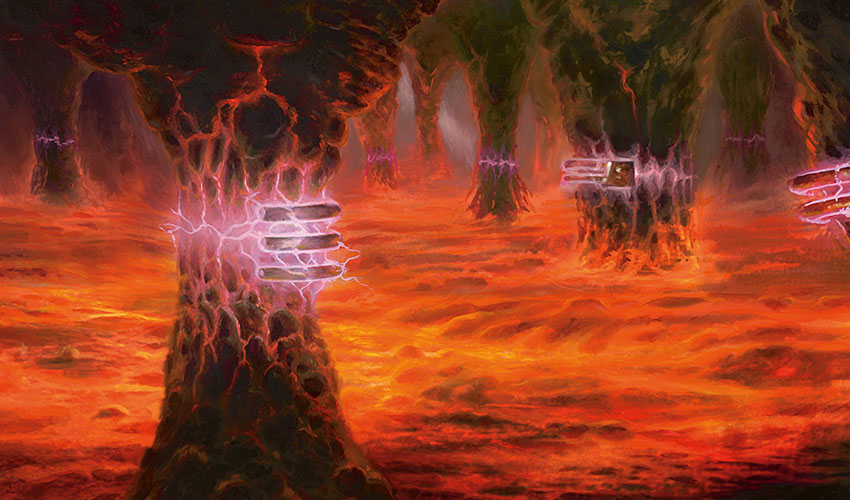
Previously Seen In: Tempest, Stronghold, Exodus, and Nemesis
Popularity: Popular
This set was created before we started doing market research on worlds. (We started doing market research on cards before we begin doing it on worlds.) It was the first world that had any of what we think of as modern-day worldbuilding. Audiences enjoyed the world, but I think a big part of the excitement was us going somewhere new and it being woven into an ongoing story. It was also the first time Magic left Dominaria in a number of years and the first time ever in a main large set. (Yes, parts of Legends didn't take place on Dominaria, but that was mostly decided after the fact.)
Mechanical Identity: Weak
Rath was before we built worlds around a mechanical theme. We did work hard to take the mechanical components we could (things like shadow and Slivers) and weave them into the plane and story, but the world itself doesn't lend itself toward a particular mechanical expectation.
Creative Identity: Weak
As I said above, Rath was the first time we did worldbuilding with artists. It was a huge step up from how we had done things previously, but looks a bit antiquated after so many years of fine-tuning our world-making ability. Rath had a lot of cool visuals and interesting components, but they don't click together to make a cohesive world quite as well as a lot of our modern worlds.
Room for Expansion: Minimal Room for Expansion
The biggest problem for a return is that as part of the Phyrexian invasion of Dominaria, the plane of Rath was overlaid with Dominaria and is now essentially part of Dominaria.
Story Continuation: Minimal/No Plot Lines
The Rath story was so long ago and so instrumental to the Weatherlight Saga that there aren't a lot of threads to follow up on. If we did, it would be part of a Dominaria story and not a separate Rath story.
Rabiah Scale Rating: 9
9 is the rating I give when the plane is essentially no more and the only way to visit it is to have an expansion set in the past. Even then, the only reason I could see to do another Rath set is to retell the Weatherlight Saga from a new perspective.
Ravnica
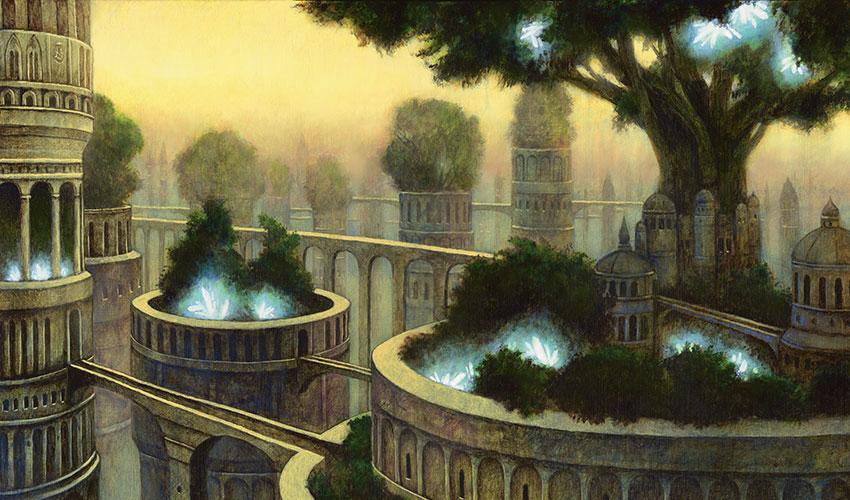
Previously Seen In: Ravnica, Guildpact, Dissension, Return to Ravnica, Gatecrash, Dragon's Maze, and Guilds of Ravnica
Popularity: Very Popular
By almost every metric, Ravnica is currently the most popular plane with our players. Guilds of Ravnica is our third trip there, and each one has been a huge hit. Ravnica is so popular that it shapes how we think about new worlds when we build them.
Mechanical Identity: Strong
Ravnica is about as tied to guilds (aka two-color factions) as any world can be tied to any mechanical component. On top of that, there are many other mechanical elements, like hybrid mana and split cards, that players associated with the world. It even has a large number of cycles that players anticipate us creating every time we return.
Creative Identity: Strong
Ravnica is as much the gold standard for worldbuilding as it is for mechanical identity. The ten guilds are beloved, and each one has a strong flavor associated with it.
Room for Expansion: Significant Room for Expansion
Ravnica is filled with all sorts of things to explore, both mechanically and creatively. The problem is always fitting everything in that we want to do, not stretching to fill the design space.
Story Continuation: Major Plot Lines
Because Ravnica is so popular, we've spent a lot of time building up the characters of the world as well as intertwining it with the main storyline of the game. The number of stories we could tell based on things we've already established on Ravnica is huge.
Rabiah Scale Rating: 1
Ravnica scores well on every criterion. If Rabiah is one end of the scale, Ravnica is the other.
Regatha
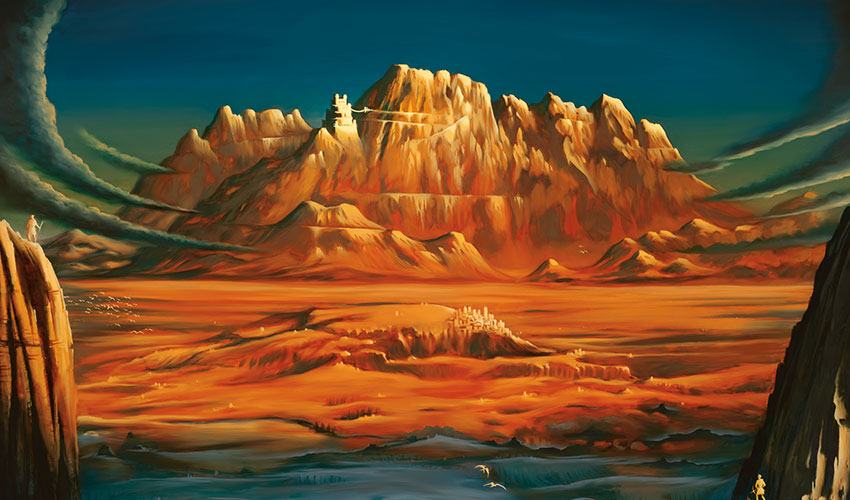
Previously Seen In: Magic Origins
Popularity: Liked
I believe most of you when you read the name "Regatha" asked yourself "What's Regatha?" That's probably the biggest issue with the plane—most people simply don't know what it is. The plane was the setting for the novel The Purifying Fire and is where Keral Keep is, the monastery at which both Jaya and Chandra spent some time. It's the world Chandra first sparked to in Magic Origins. There are fans of Regatha who want to see it get its own set, but they're currently a small minority.
Mechanical Identity: Weak
The world is mostly known for its volcanic activity and lots of fire/magma spells (a bunch being Chandra-related). If we ever travelled there for a full set, design would have a bunch of work forging (pun, as always, intended) it a mechanical identity.
Creative Identity: Weak
Magic worlds need to have elements of all five colors. The red part would be easy for Regatha, but there would be a bunch of work for the other four colors. Regatha was one tenth of Magic Origins, and we barely had enough world to fulfill that ask.
Room for Expansion: Some Room for Expansion
This is an odd category in that the world is very unexplored, so, on one hand, it has a lot of potential to do things, but, on the other hand, there isn't much previously done to build on. From a design and creative perspective, the world is a bit daunting in that there would be a lot of work to help define what it is.
Story Continuation: Minor Plot Lines
We've had a book and part of an expansion set here, so there's a few things to tie into. The fact that it's connected to Chandra, one of our major characters, also helps.
Rabiah Scale Rating: 6
The world is tied into the current storyline, and it's been featured enough that it has some awareness with our players. There's a lot of work needed to flesh it out, but I could see us potentially visiting here one day.
Shandalar
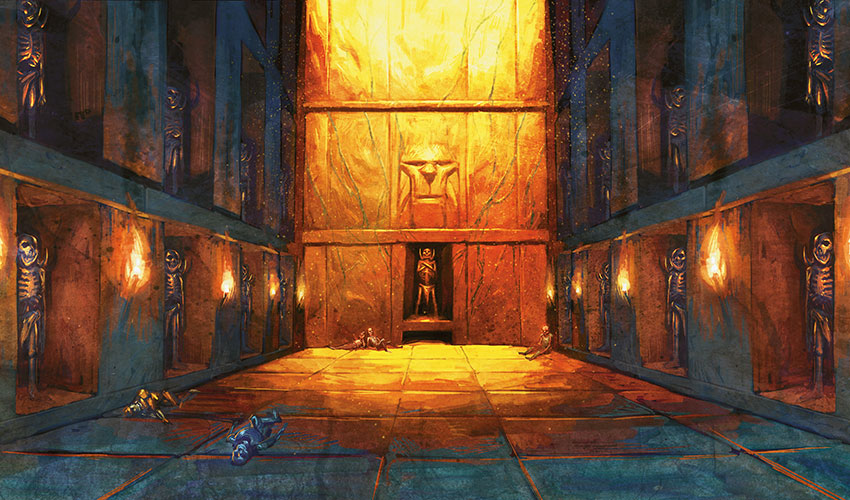
Previously Seen In: some core sets and the Microprose Magic game from the late '90s
Popularity: Liked
I put Shandalar in the same camp I put Regatha, in that I believe the majority of our players simply don't know the name. Shandalar was first featured in a video game by Microprose in the early days of Magic (in 1997). Probably the biggest draw for returning there is the nostalgia old timers hold for the video game. We've used it as a world for numerous core sets when we needed a place for a generic fantasy trope.
Mechanical Identity: Weak
For all intents and purposes, Shandalar has no mechanic identity. If we visited it in a set, we'd have to create one from scratch.
Creative Identity: Weak
Shandalar has basically been our generic fantasy world for core set cards that are trying to be top-down fantasy tropes. Creative would have just as much work as design if we decided to visit.
Room for Expansion: Average
I'll give the same answer I gave for Regatha. The world is mostly undefined, so we have lots of room to explore, but next to nothing to build off of.
Story Continuation: Minimal/No Plot Line
Unlike Regatha, Shandalar has no tie to the modern story and no main characters linked to it.
Rabiah Scale Rating: 7
Shandalar is basically Regatha with less story and character investment. It's got a little name recognition due to the Microprose game, but would require a lot of work if we chose to set a Standard-legal set there.
Tarkir

Previously Seen In: Khans of Tarkir, Fate Reforged, and Dragons of Tarkir
Popularity: Khans version (Popular), Dragons version (Liked)
Tarkir is in a weird place. We visited a plane, then radically changed it, and the audience preferred the world before the change. Luckily, we seeded a few things into Tarkir in case this happened.
Mechanical Identity: Strong
Tarkir and its wedge color identity (a color and its two enemies) are strongly linked, and I doubt we'd return to Tarkir without a wedge presence in the set. (Although, I should note that three-color has some play design issues to work through.) Tarkir is also linked to Dragons, which would also be a component on any return.
Creative Identity: Strong
The Creative team spent a lot of time and energy filling the world of Tarkir with amazing creative components. It's probably the most fleshed out world that we've only visited once.
Room for Expansion: Significant Room for Expansion
Tarkir has an extensive amount of worldbuilding, with each clan having its own portion of the world in which to shine. The original block had elements from two timelines and two different points in time. I am confident that a return would have plenty of space to work with, both mechanically and creatively.
Story Continuation: Minor Plot Line
Because of the time travel component of the story, the Creative team was careful not to tie Tarkir too closely to the current storyline, but the world has a lot of threads a story could pick up on, including Sarkhan and Narset, who are from Tarkir, and Ugin who made it his home plane for many years.
Rabiah Scale Rating: 4
The world has strong mechanical and creative ties, is popular, and ties into the modern story in numerous ways. The biggest issue is how to capture some of the old timeline mojo in the current timeline, but a bunch of work was seeded to help us do that.
Theros
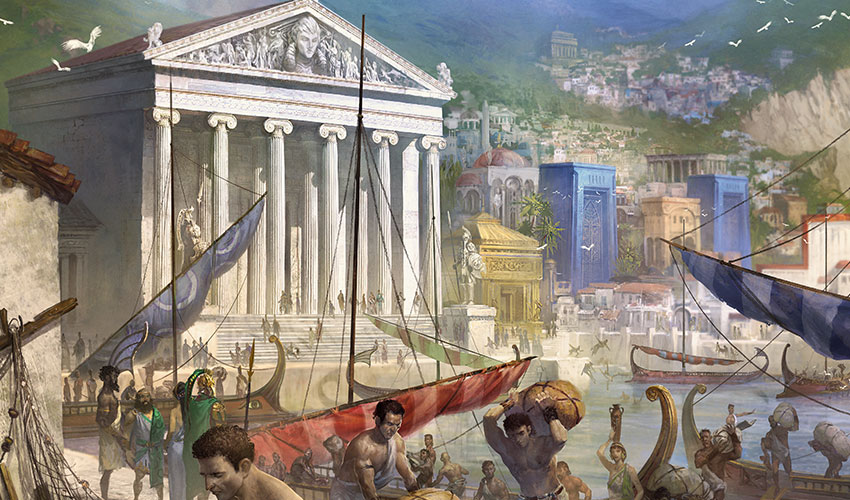
Previously Seen In: Theros, Born of the Gods, Journey into Nyx, and Magic Origins
Popularity: Popular
Players had been asking for a Greek mythology–inspired set for years, so when we finally delivered one, the majority was pretty happy with it.
Mechanical Identity: Strong
Theros is about gods, heroes, and monsters (aka top-down Greek mythology) with a strong enchantment theme (representing the impact of the gods on the mortal world). A return would have plenty of mechanical expectations, including a higher emphasis on enchantments. (The biggest note from Theros block was that the players wanted more of an enchantment focus.)
Creative Identity: Strong
Greek mythology as a source material provided the Creative team with a lot to work with. From the civilizations to the settings to the creatures, Theros is filled with cool stuff.
Room for Expansion: Significant Room for Expansion
Again, with a source material as deep and as widely known as Greek mythology, there is still plenty to draw on for future sets.
Story Continuation: Major Plot Line
One word: Elspeth. Last time we were here, Elspeth was killed and sent down to Theros's underworld. If we never returned to finish that storyline, players would not be happy. In addition, the world has ties to two of the Gatewatch: Gideon (it's his home world) and Ajani (he visited it in original Theros block).
Rabiah Scale Rating: 3
Theros isn't in the very top tier of favorite worlds, but it's close, and it has a storyline that many players are dying to see addressed, so odds are we'll be back.
Ulgrotha

Previously Seen In: Homelands
Popularity: Unpopular
If any other previous world could give Kamigawa a run for its money as lowest rated world (other than Mercadia), it would be Ulgrotha. (Homelands came out before we measured worlds with market research.) The set it was in was very unpopular (for mechanical reasons), and the few attempts to tie products into its flavor were unsuccessful with the fans.
Mechanical Identity: Weak
Homelands was created before we gave worlds mechanical identity, so a return there wouldn't have much to work with.
Creative Identity: Weak
The two most popular pieces of the world were the Sengir family and the Serra storyline, neither of which we've visited in years, so is unknown by all but the flavor diehards. The world was a hodgepodge of elements that were popular in Limited Edition (Alpha), so the world feels a bit disjointed.
Room for Expansion: Minimal Room for Expansion
The set is one of the most unpopular we've ever made, with only a handful of iconic cards. A return to Ulgrotha would not have much to work with. The Sengir family can only fill up so many cards.
Story Continuation: Minimal Room for Expansion
Other than a portal to an unnamed other plane, there aren't many threads left to pick up on.
Rabiah Scale Rating: 9
Ulgrotha is tied to a very unpopular set. In addition, the theme it's closest to, Gothic horror, was done better on Innistrad, which makes a return unlikely.
Vryn
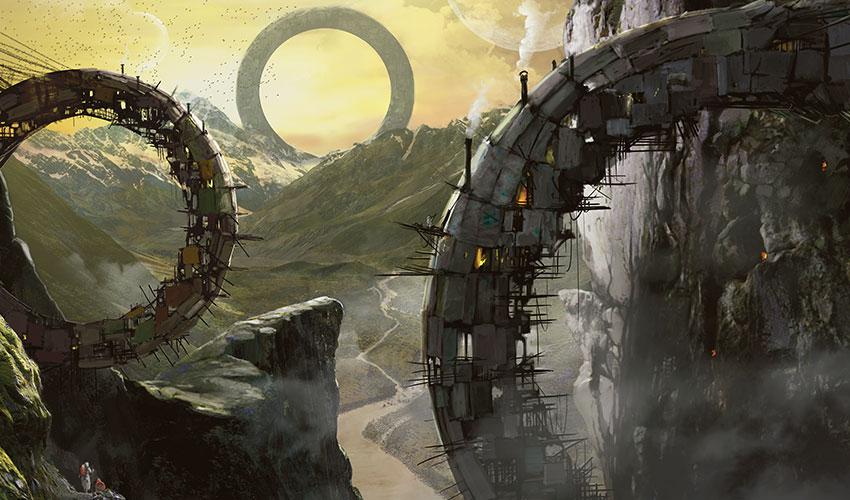
Previously Seen In: Magic Origins
Popularity: Liked
Probably the biggest thing going for Vryn is that it's Jace's home plane. When you ask players if they want to visit it, that seems to be the main reason for yes.
Mechanical Identity: Weak
We've only ever seen Vryn in Magic Origins, and it didn't do much to give it a mechanical identity. If we visited Vryn, we'd have to mostly start from scratch.
Creative Identity: Weak
We know very little about Vryn other than it has the mage rings. We don't even know what the mage rings do on the plane. A visit to Vryn would require a lot of work on creative's part to give it an identity.
Room for Expansion: Some Room for Expansion
Like the other planes that we really haven't visited in any depth, the world has a lot of possibility because it hasn't been defined yet. That also means it has little to build on.
Story Continuation: Minor Plot Line
The most compelling reason to visit Vryn is because of Jace. He definitely has a reason to visit there, and players would probably want to see that story.
Rabiah Scale Rating: 6
Vryn would be a lot of work to visit, but it being Jace's home world with some built-in narrative definitely increases its chances.
Zendikar
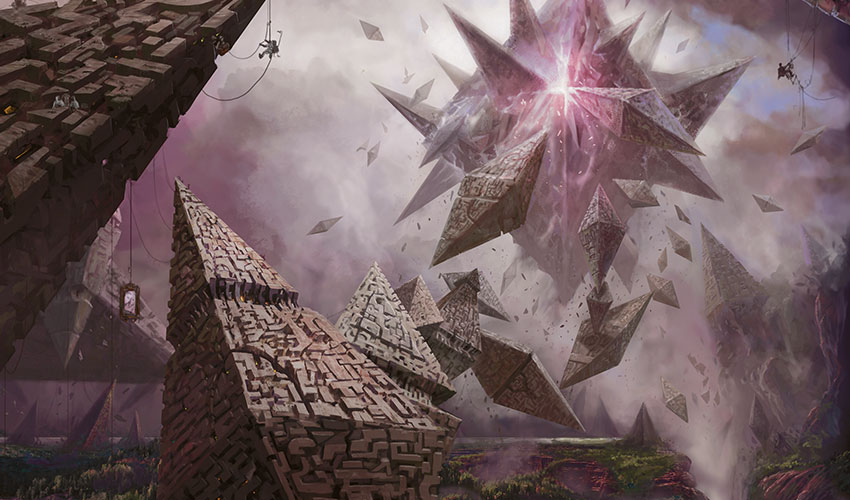
Previously Seen In: Zendikar, Worldwake, Rise of the Eldrazi, Battle for Zendikar, Oath of the Gatewatch, and Magic Origins
Popularity: Very Popular (without Eldrazi), Popular (with Eldrazi)
Zendikar is one of the more popular planes. Market research shows though that players like it more without Eldrazi than with them, so I expect any future visit would be closer to original Zendikar than Battle for Zendikar.
Mechanical Identity: Strong
Zendikar is tied to two things mechanically: lands and "adventure world" tropes. Any revisit would definitely tie into those two things.
Creative Identity: Strong
Zendikar is one of our most visually compelling worlds and has a lot of great civilizations and peoples built into it.
Room for Expansion: Significant Room for Expansion
Zendikar plays around in spaces that have a lot of mechanical and creative rooms for exploration. Some worlds I worry about having enough to fill out the set. That's never an issue with Zendikar.
Story Continuation: Major Plot Line
Zendikar is very interwoven into the major storyline. It's also the home of Nissa, Nahiri, and Kiora, as well as a place visited by the majority of our main characters. There are many stories we could tell on a revisit.
Rabiah Scale Rating: 2
The one issue on a return is steering closer to original Zendikar than Battle for Zendikar, but as the Gatewatch defeated the Eldrazi on their last visit, that's an easy goal to meet.
As the Worlds Turn
And that wraps up the Rabiah Scale. I hope this two-parter gave you an insight into how likely we are to return to each of our major planes. As always, I'm eager for your feedback. It could be about today's column or about any of the planes I talked about and whether you'd like to see us visit there in a Standard-legal set. You can email me or contact me through any of my social media accounts (Twitter, Tumblr, Instagram, and Google+).
Join me next week for part two of my look into the card designs of the Weatherlight crew.
Until then, may we visit the world you're most excited to see.
#591: Guilds of Ravnica
#591: Guilds of Ravnica
In this podcast, I talk about the vision design of Guilds of Ravnica.
#592: CAPS
#592: CAPS
39:11
In this podcast, I talk about a group of people who do a lot of work on Magic, but not the part I normally talk about. This is the people to whom R&D hand off their work.
- Episode 590 Letting Go
- Episode 589 Chicago
- Episode 588 Alpha Playtesters

